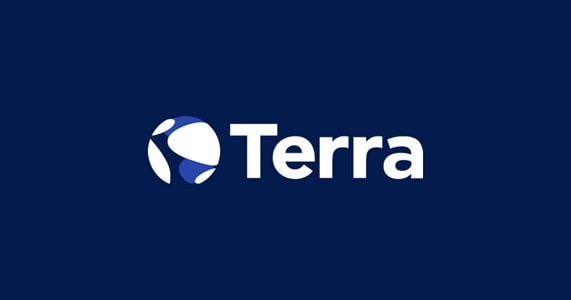Stablecoins, essential for ensuring stability in cryptocurrency transactions and acting as a vital link between traditional and decentralized finance (DeFi), have seen TerraUSD (UST) rise to prominence due to its distinctive stability approach and the prospects it presents for swapping and staking. In this article, we will thoroughly examine TerraUSD, delving into its foundational ecosystem, the mechanics of swapping, enticing staking incentives, effective yield farming strategies, cross-chain adaptability, regulatory considerations, and more. As the cryptocurrency realm continues to evolve, it is imperative to remain well-informed and explore pioneering solutions. If you wish to learn about investing with education companies, you may Click Here.
Understanding Terra: A Brief Overview

The Terra Ecosystem
Terra is a blockchain platform designed to maintain price stability for its native stablecoins. It accomplishes this by creating an algorithmic monetary policy that adjusts the supply of stablecoins to maintain their value close to the target price, often set at $1. This approach distinguishes Terra from other stablecoins that rely on collateral or reserves.
How Terra Achieves Stability
Terra employs a unique dual-token system consisting of Terra (LUNA) and TerraUSD (UST). LUNA serves as collateral for UST and plays a pivotal role in stabilizing its value. When UST deviates from its target price, LUNA is used to incentivize arbitrageurs to mint or burn UST, bringing its price back in line with the target.
TerraUSD (UST) as a Leading Stablecoin
TerraUSD, the flagship stablecoin of the Terra ecosystem, has gained popularity as a reliable and scalable stablecoin in DeFi. Its algorithmic stability mechanism and growing adoption make it an attractive option for users seeking stability and decentralized financial opportunities.
Swapping UST: The Gateway to DeFi
What is Swapping in DeFi?
Swapping refers to the exchange of one cryptocurrency for another in a decentralized manner. DeFi platforms use automated market makers (AMMs) and liquidity pools to facilitate these swaps, allowing users to trade assets without relying on centralized intermediaries.
Liquidity Pools and Decentralized Exchanges (DEXs)
Liquidity providers (LPs) contribute their assets to liquidity pools on DEXs, such as Uniswap and TerraSwap, in exchange for transaction fees and a share of the trading fees. UST liquidity pools offer opportunities for users to earn yield by providing liquidity.
Benefits of Swapping UST
Swapping UST on DeFi platforms enables users to access a wide range of cryptocurrencies, participate in yield farming, and engage in various DeFi protocols. UST’s liquidity and stability make it a favored choice for many DeFi activities.
Risks and Considerations
While swapping UST offers numerous benefits, it is not without risks. Impermanent loss, smart contract vulnerabilities, and market volatility are factors to consider when participating in DeFi swaps.
Staking UST: Earning Rewards and Supporting the Network
The Concept of Staking
Staking involves locking up cryptocurrencies in a network’s smart contract to support network operations and, in return, earning rewards. Terra offers a staking mechanism that allows users to stake LUNA and UST.
Terra’s Staking Mechanism
Terra’s staking mechanism involves delegating LUNA or UST to validators who secure the network. Validators are rewarded with transaction fees, and these rewards are shared with delegators.
Incentives for Stakers
Staking UST provides users with rewards in the form of transaction fees, adding to their overall returns. Additionally, stakers contribute to the security and stability of the Terra network.
Staking Risks and Security
While staking can be a rewarding activity, it comes with risks such as slashing and potential network vulnerabilities. Users should carefully choose validators and be aware of the risks associated with staking.
Yield Farming with UST: Maximizing Returns
Introduction to Yield Farming
Yield farming involves providing liquidity to DeFi platforms in exchange for rewards. UST is often used in yield farming due to its stability and high demand.
How UST is Used in Yield Farming
Users can deposit UST into liquidity pools on DeFi platforms like Anchor Protocol or Mirror Protocol and earn rewards in the form of additional UST or other tokens.
Strategies for Maximizing Yield
Yield farming with UST can be profitable, but it requires careful strategy selection, risk management, and awareness of the specific DeFi platforms being used.
Risks Associated with Yield Farming
Yield farming carries risks such as impermanent loss, smart contract vulnerabilities, and sudden changes in token prices. Users should be cautious and conduct due diligence before participating.
UST in Cross-Chain Transactions
Interoperability with Other Blockchains
Terra has established itself as a blockchain with interoperability at its core. UST can be bridged to other chains, allowing users to utilize UST on different blockchain networks.
Bridging UST to Other Chains
Cross-chain bridges like Wormhole and ShuttleBridge facilitate the movement of UST between Terra and other blockchain ecosystems, expanding its utility.
Use Cases and Benefits of Cross-Chain UST
Cross-chain UST opens up opportunities for users to access DeFi protocols on other blockchains, participate in cross-chain trading, and diversify their investments.
Regulatory and Security Considerations
Regulatory Challenges for Stablecoins
Stablecoins, including UST, face regulatory scrutiny worldwide. Compliance with AML (Anti-Money Laundering) and KYC (Know Your Customer) requirements is essential to navigate the evolving regulatory landscape.
Security Measures for UST Users
Users should prioritize security by using reputable wallets, practicing safe custody, and remaining vigilant against phishing attacks and scams.
Compliance and Reporting Requirements
To ensure regulatory compliance, stablecoin users may need to report transactions and holdings in accordance with their jurisdiction’s laws.
Conclusion
In conclusion, TerraUSD (UST) offers a unique stablecoin experience with its algorithmic stability mechanism, diverse use cases in DeFi, and cross-chain capabilities. Users can explore swapping, staking, yield farming, and cross-chain transactions to maximize their cryptocurrency investments. However, it is crucial to remain informed about risks, regulatory requirements, and security measures while navigating the exciting world of UST and Terra’s ecosystem. As the crypto space continues to evolve, Terra’s innovative approach to stability and utility is likely to play a significant role in shaping its future.












